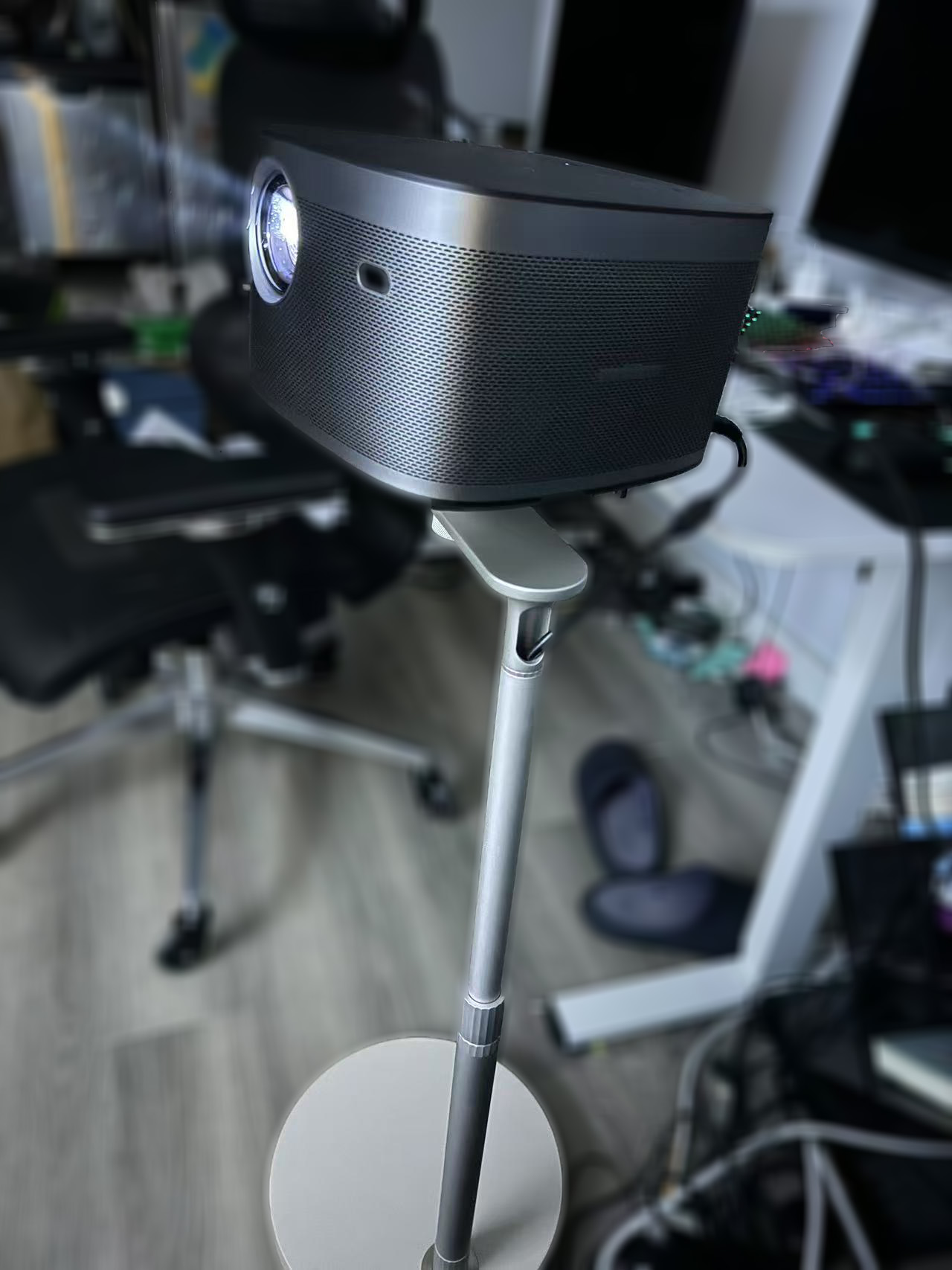For week 1 I mainly focused on making my plan more detailed and started to test the technology & devices that I plan to use in my project.
This project was inspired by research on the colonialization of American museums. Through my research, I discovered that revealing the cultural background of historical artifacts is an effective approach to museum decolonization. As a result, my research also covers strategies for informal learning in museums, as well as users' needs and interests within museum spaces. This semester, I will build upon the findings from my previous research to address the identified questions and needs.
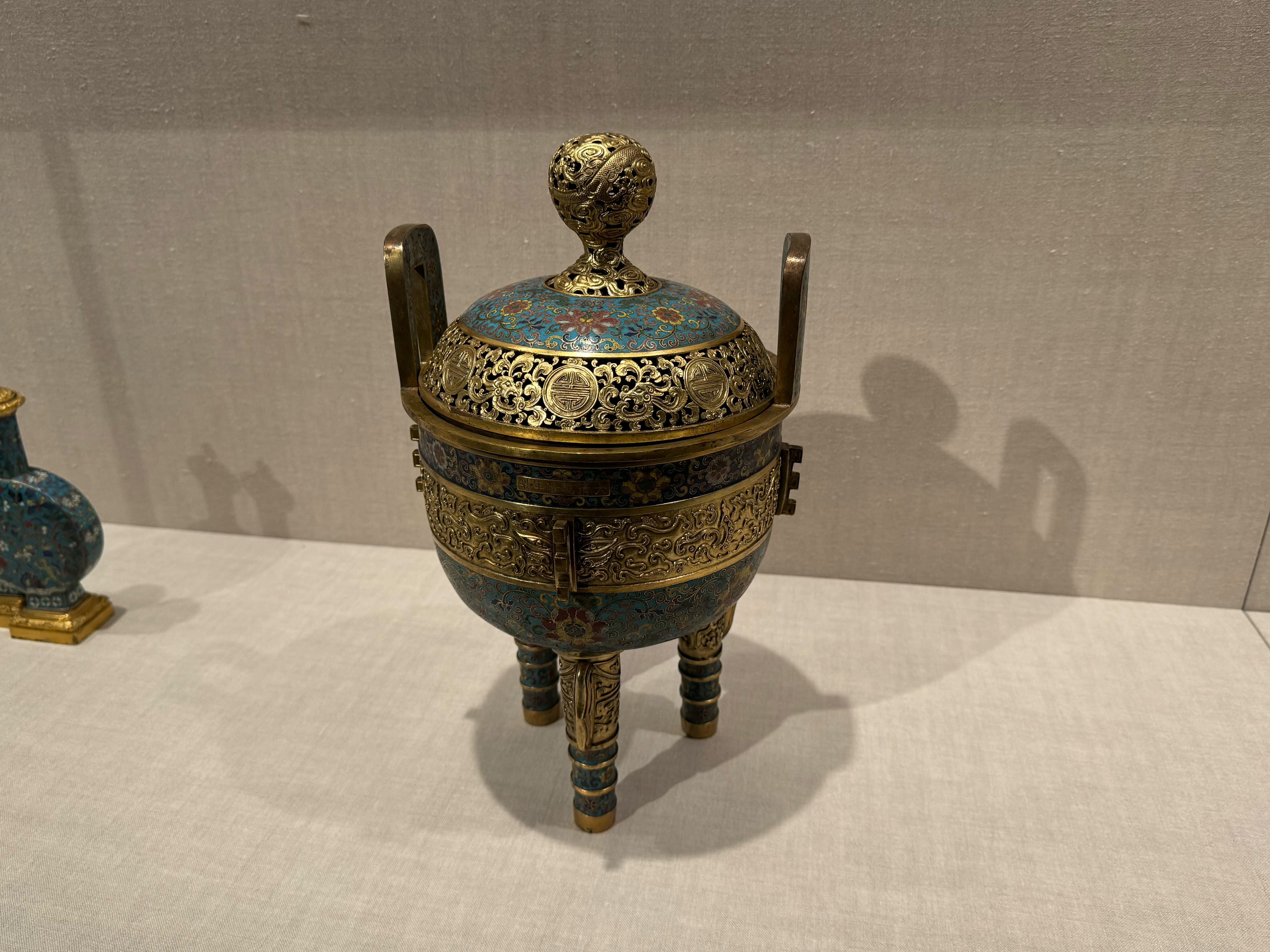


During the research process, I primarily used secondary research to supplement my project with conceptual information and references to relevant projects. For primary research, I used shadowing to understand existing museum curation methods, user interviews to explore user characteristics and needs, expert interviews to validate information obtained from secondary research, and co-design sessions for brainstorming.
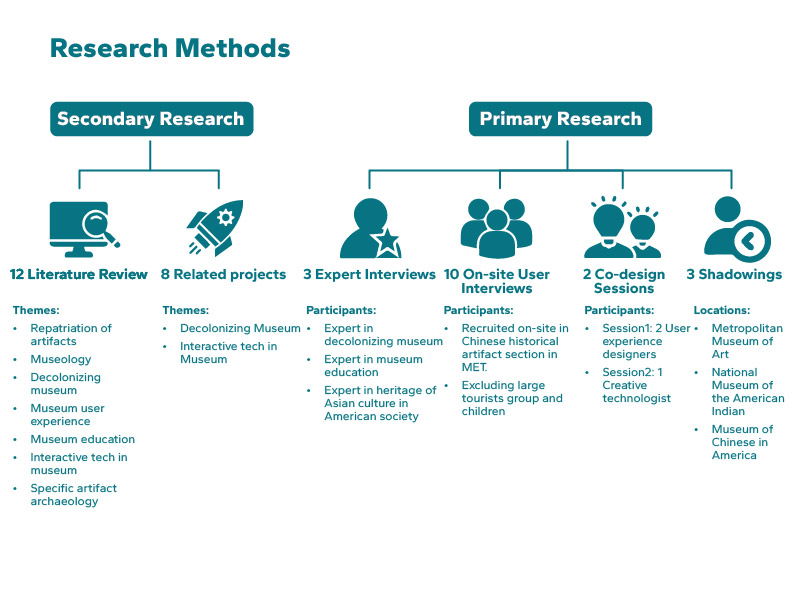


How might we build an on-site installation (or curation) that focus on reveal the cultural context rather than just the artifact for a specific Chinese historical artifact (Chinese Cloisonné Enamel Incense Burner) that provide young visitors of universal museums in America with a fictional, drama-like interactive experience to achieve the goal of decolonizing museums through informal learning?
Young visitors with no deep knowledge (of the selected artifact)
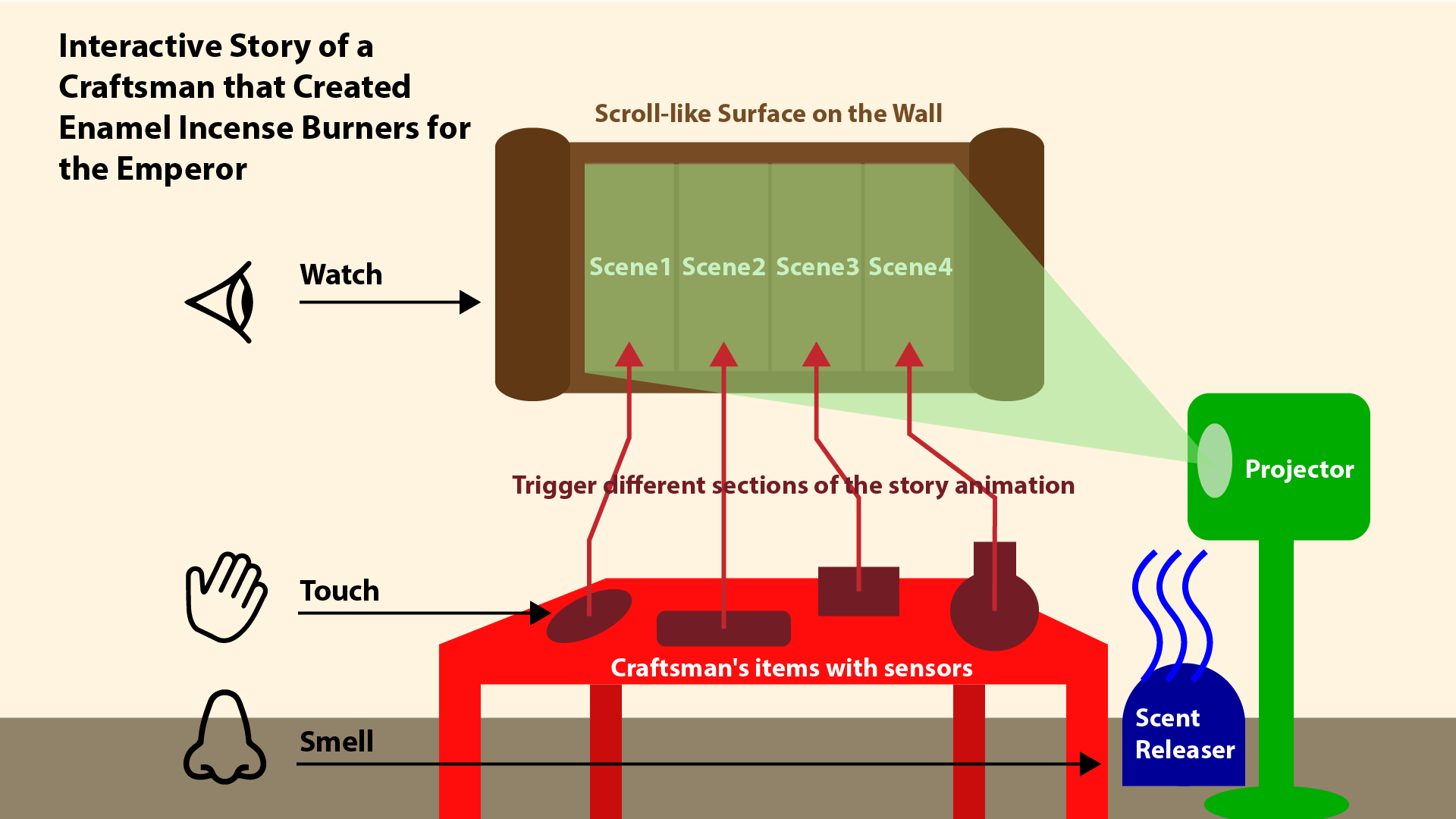
My current concept for the project is an installation in a museum. The red section represents a physical interface simulating an enamel artisan's workbench, displaying four objects that correspond to different stages of a story. Users can interact with these objects to trigger animations (story of this artisan) on a "scroll" (yellow section) positioned vertically on the ground. These animations will be projected by a projector (green section). At the same time, blue scent diffusers will release specific scents.
The main milestone is to establish the concept and complete technical testing before the fourth week to finalize the project details. Since the physical components and storyline influence each other, I will begin designing and creating both the physical elements and animation simultaneously after this stage. The goal for the midterm demo is to complete just one scene of the animation along with the physical component. After that, the target is to complete the thesis writing and project production by the eleventh week. The remaining time will be mainly dedicated to documentation and as a buffer.

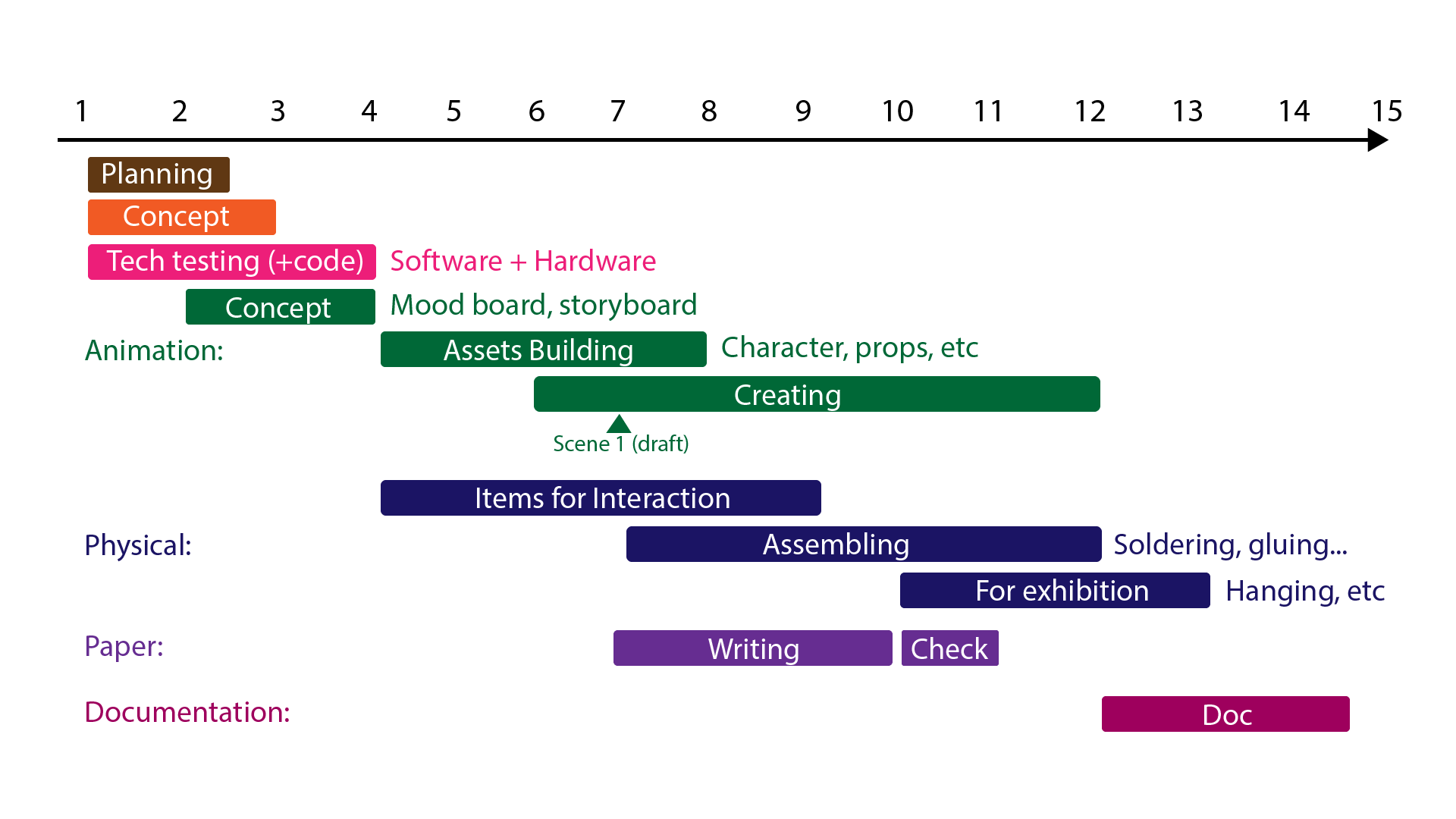
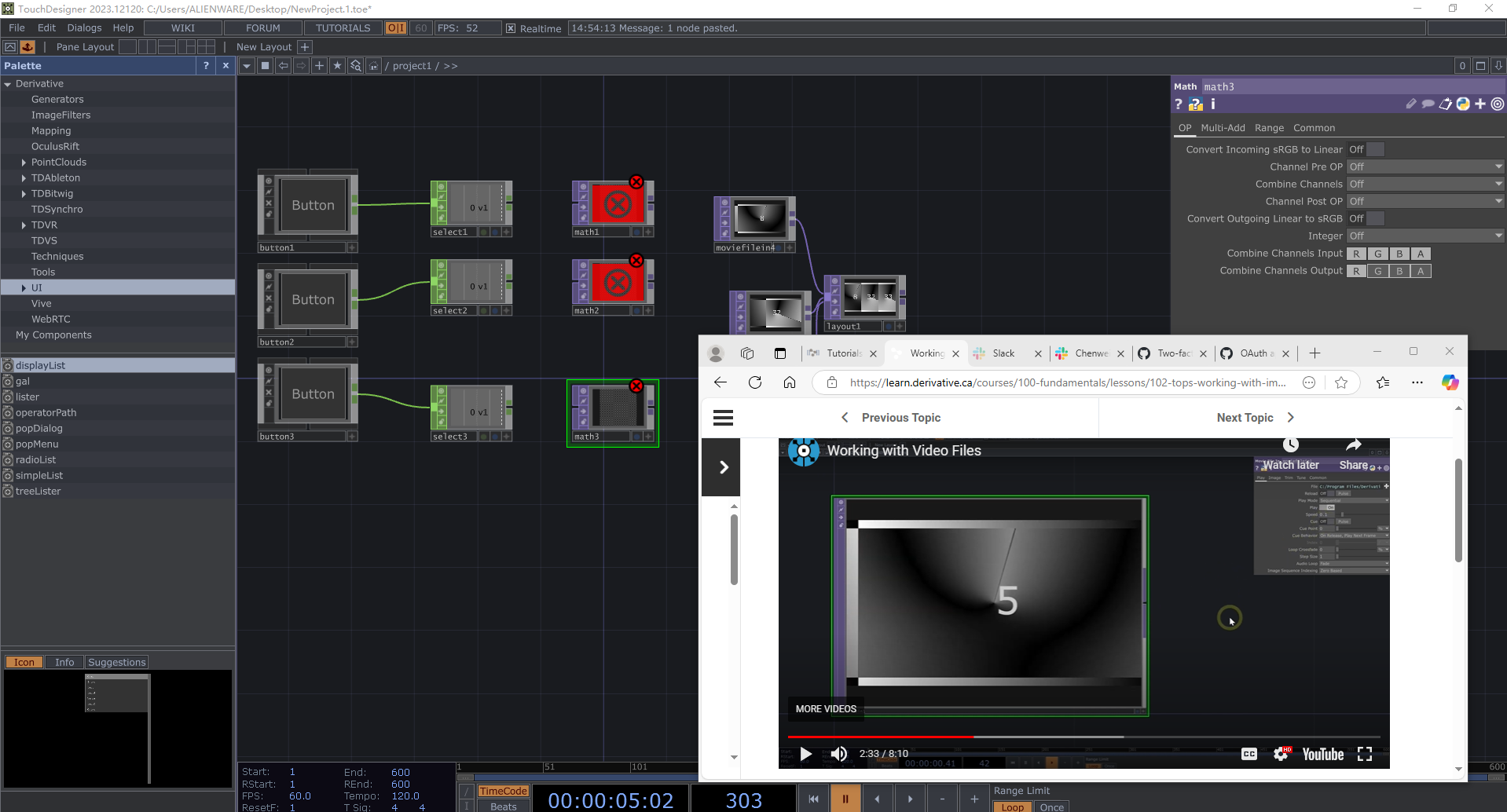
At the beginning of this week, I tried using TouchDesigner as my primary software choice because it is a visual programming tool. Since I had no prior experience with this software, I initially attempted to learn it through tutorials and forums. However, due to the limited availability of resources and the high learning curve, I ultimately abandoned this option and chose p5.js as the tool for implementing the interactivity in my project.
I started experimenting with the combination of p5.js and Arduino to achieve the interactivity I envisioned. First, I aimed to implement a simplified version of the interaction, where multiple physical buttons on the Arduino would each control the playback of different videos on the screen.
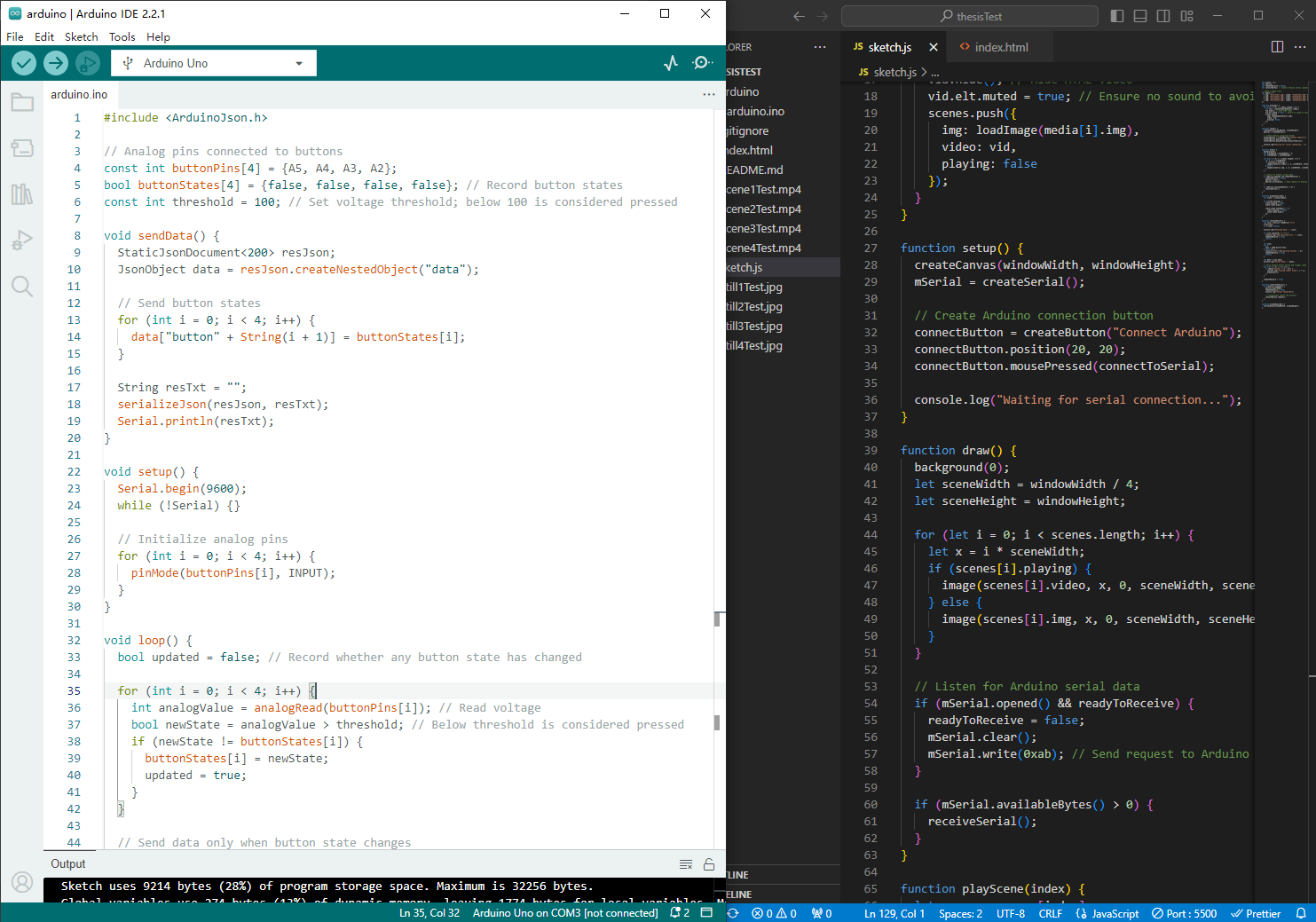


In this test, I built a simple circuit and used an image writing "S" as a placeholder for the untriggered state, while videos counting from 1 to 15 seconds served as placeholders for the triggered state. The test was successful.
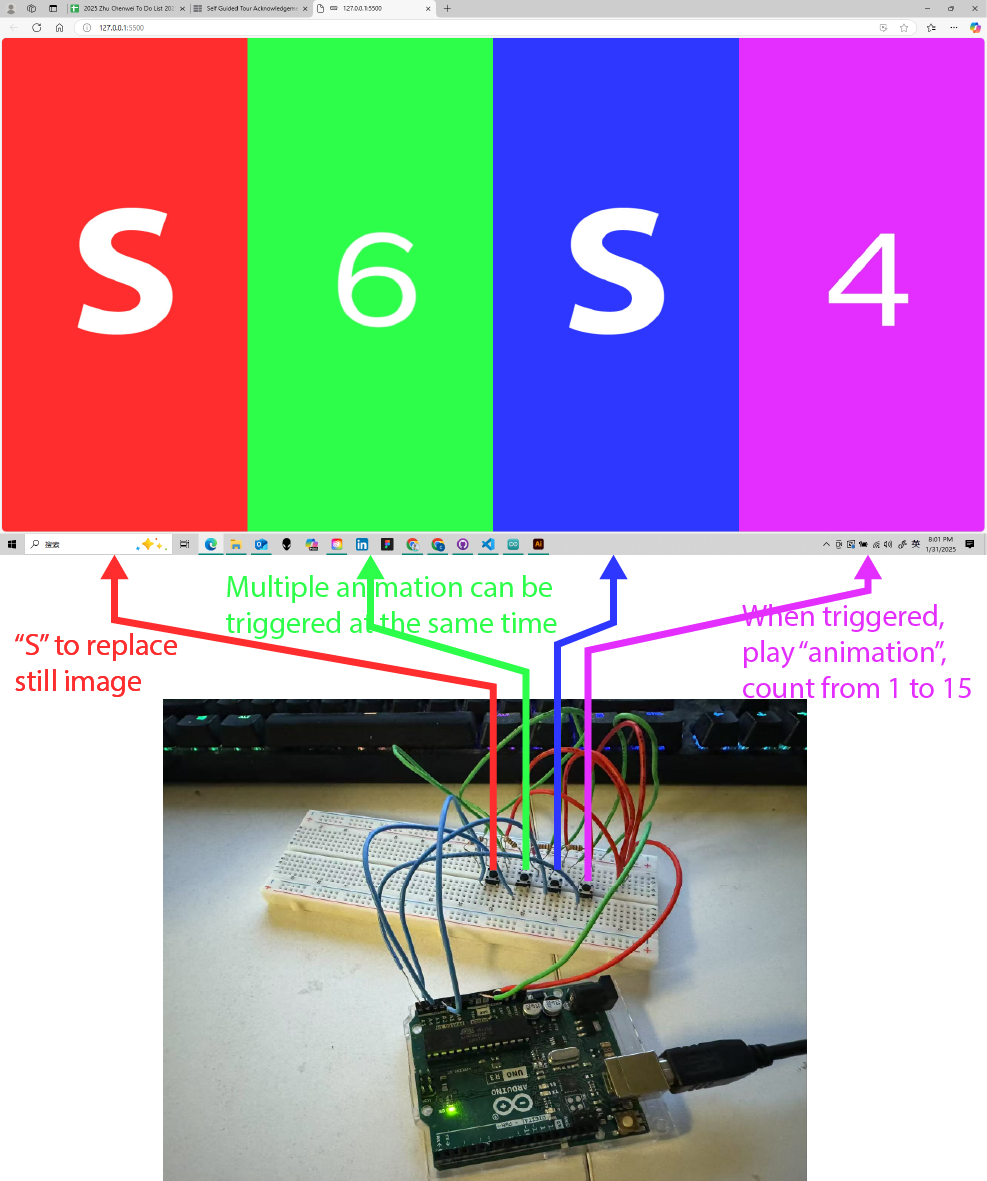


I first tried adding interaction in the code: the light turns on for 5 seconds after the last video plays for 8 seconds.
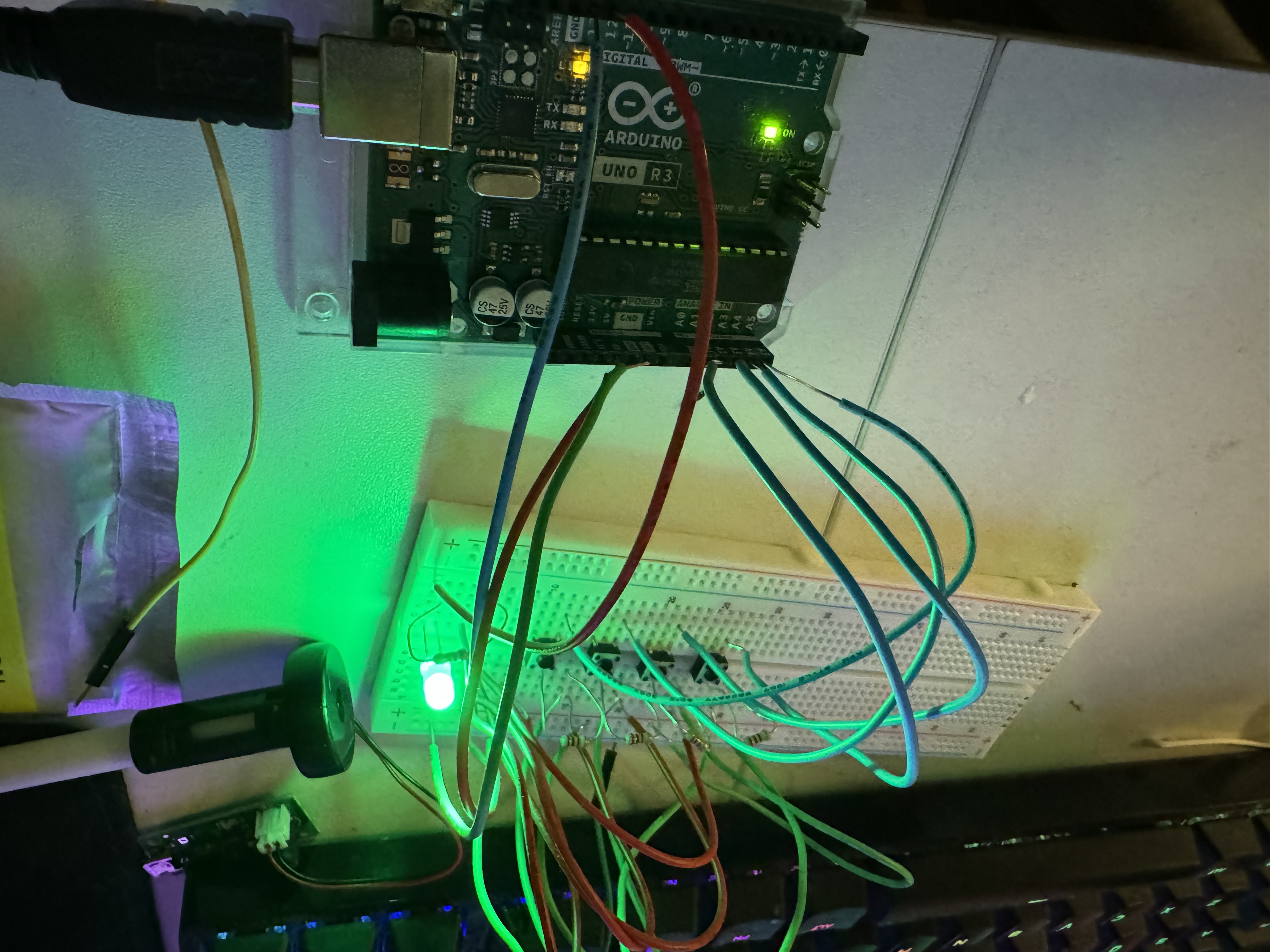


To achieve instant scent dispersion, the best method I came up with is using an atomizer. So, I added a modified atomizer module to my circuit. However, I found that the Arduino pin's current was insufficient, so I bought a relay. I will continue testing next week.
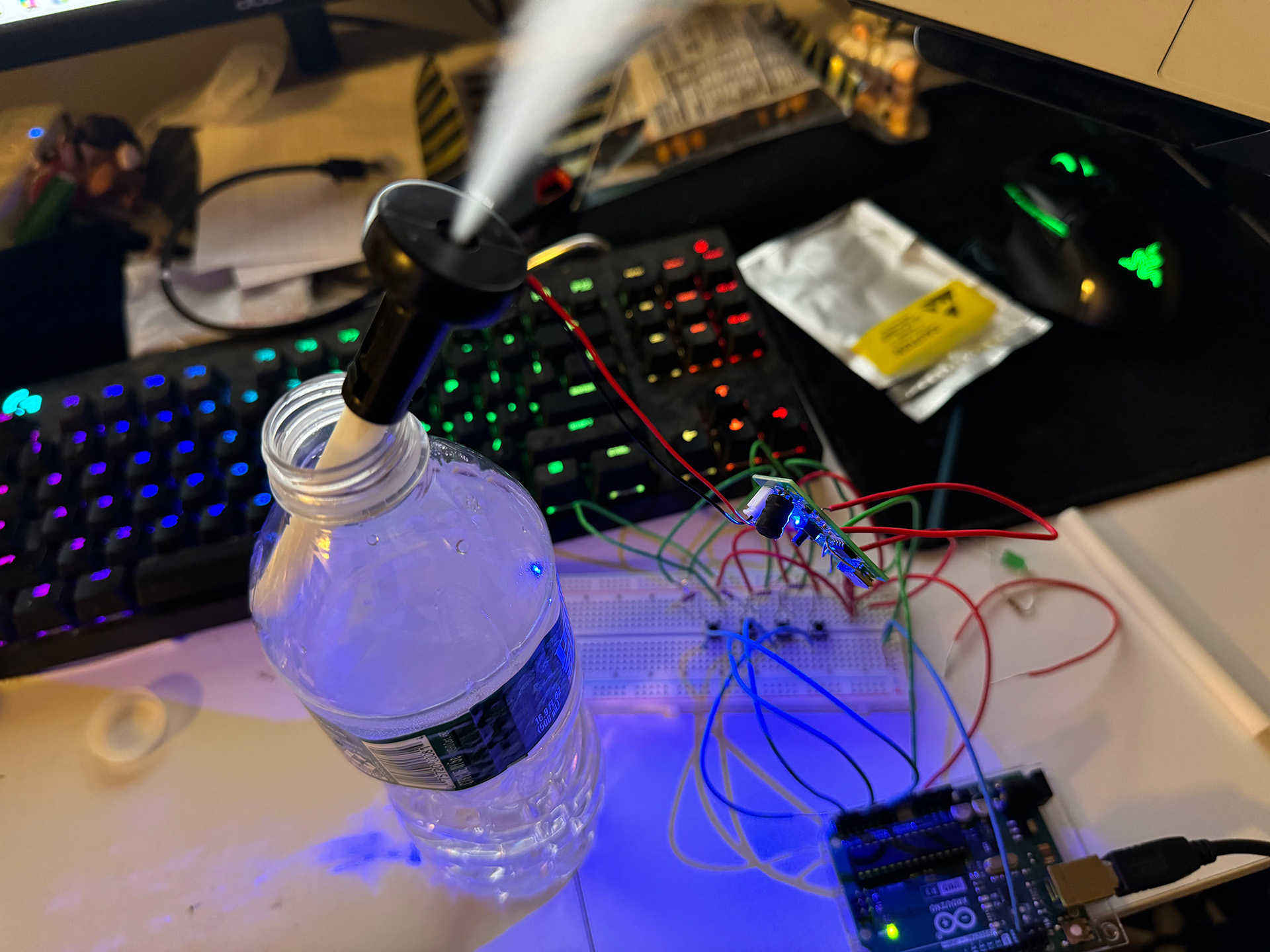


This exploration is for brainstorming how to realize the touch interaction as the physical interface for my installation.
To achieve fully touchable interaction with objects, using a capacitive sensor would undoubtedly be the best option. However, the main issue with capacitive sensors is that they either need to be attached to the object, which essentially makes them no different from buttons, or the object's surface must be covered with conductive materials or conductive paint. This approach not only limits the object's appearance but also presents challenges—conductive paint, in particular, is highly toxic and unsuitable for experimentation.From a UX perspective, designing an object to be fully interactive across its entire surface might encourage users to pick it up, which is not the kind of behavior I want to promote in a museum environment. For these reasons, capacitive sensors are not among my top choices.
Similarly, its issue is that it can only function within a relatively small area.
This type of sensor has a larger touch range and can be triggered without requiring highly precise touch. However, the issue is that I am not sure whether nearby sensors will interfere with each other, which requires further testing.
Another possibility is to transform this interactive process into four different interactive toy-like triggers rather than repeating touch interactions. For example, one object could be a box, where opening and closing the lid triggers the interaction, in which case a light sensor could be used. However, this approach would require determining the storyline first.
I set up the projector for my project and tested its keystone correction for diagonal projection, as this feature is crucial for my project.
